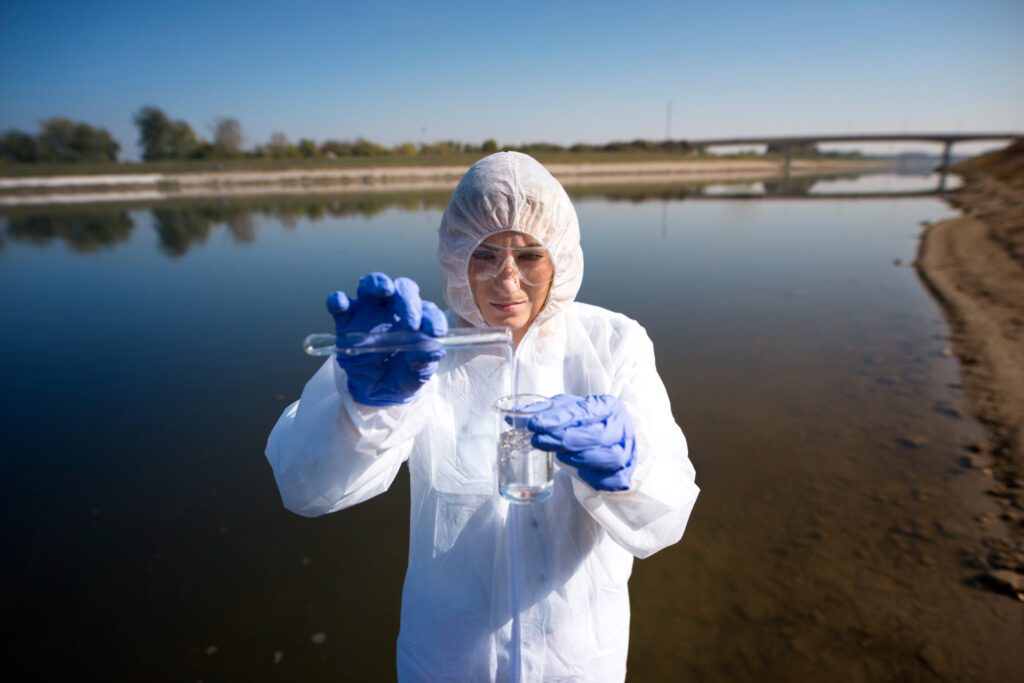Wastewater treatment is a cornerstone of modern urban and industrial infrastructure, ensuring that water released back into the environment is loose of harmful contaminants. Central to this process is the use of microbes in sewage treatment, which act as natural decomposers, breaking down complex organic and inorganic substances into simpler, environmentally benign forms. From primary biological processes to advanced nutrient removal systems, microorganisms play a pivotal role in transforming wastewater into a valuable resource.
The Importance of Microbes in Sewage Treatment
Microbes are indispensable in the wastewater treatment process because of their ability to metabolize organic pollutants, degrade harmful compounds, and contribute to nutrient cycling. They offer an eco-friendly alternative to chemical treatments, which can be expensive and environmentally harmful.
How Microbes Work in Sewage Treatment
-
Degradation of Organic Matter
Microbes feed on organic compounds in wastewater, breaking them down into simpler molecules like carbon dioxide, water, and methane. This not only reduces the organic load but also prepares the water for further treatment. -
Pathogen Removal
Certain microorganisms help suppress harmful pathogens by outcompeting them for resources or directly destroying them. -
Nutrient Recycling
Microbes are key players in processes like nitrification and denitrification, which remove nitrogen compounds, and biological phosphorus removal, which prevents eutrophication.
Microbial Processes in Advanced Wastewater Treatment
-
Activated Sludge Systems
- Microbial communities thrive in aeration tanks where they digest organic matter and form flocs that settle as sludge, leaving clear water.
-
Trickling Filters
- Wastewater trickles over a bed of porous material coated with biofilm, where microbes degrade pollutants.
-
Anaerobic Digesters
- In the absence of oxygen, anaerobic microbes break down organic material, producing biogas that can be used as a renewable energy source.
-
Membrane Bioreactors (MBRs)
- Advanced systems combine microbial treatment with filtration, ensuring high-quality effluent suitable for reuse.
-
Biological Nutrient Removal (BNR)
- Specialized microbes remove excess nitrogen and phosphorus through processes like nitrification, denitrification, and luxury uptake.
Types of Microorganisms in Sewage Treatment
-
Bacteria
- Responsible for most of the decomposition processes. Examples include nitrifying bacteria like Nitrosomonas and Nitrobacter that convert ammonia into nitrate.
-
Protozoa
- Feed on bacteria and small organic particles, helping to clarify wastewater.
-
Fungi
- Efficient at breaking down tough, complex organic compounds such as lignin.
-
Algae
- Play a dual role by producing oxygen in pond systems and assisting in nutrient removal.
-
Archaea
- Key players in anaerobic digestion, particularly in methane production.
Advantages of Using Microbes in Advanced Treatment
- Sustainability: Microbial processes are more eco-friendly compared to chemical treatments.
- Cost-Effectiveness: Biological systems often require less energy and fewer chemicals.
- High Efficiency: Microbes adapt to varying wastewater compositions and effectively remove a wide range of pollutants.
- Energy Recovery: Anaerobic digestion produces biogas, a renewable energy source.
Challenges in Microbial Wastewater Treatment
-
Environmental Sensitivity
- Microbial activity depends on factors like temperature, pH, and oxygen levels, which must be carefully monitored.
-
Inhibition by Toxic Substances
- Industrial effluents containing heavy metals or other toxins can inhibit microbial growth.
-
Sludge Management
- The excess biomass produced during treatment requires proper handling to prevent secondary pollution.
-
High Initial Setup Costs
- Advanced systems like MBRs and anaerobic digesters require significant initial investment.
Advancements in Microbial Technology for Wastewater Treatment
Recent innovations are enhancing the efficiency of microbes in sewage treatment:
-
Bioaugmentation
- Introducing engineered microbes to target specific pollutants.
-
Genetically Engineered Microbes (GEMs)
- Creating microorganisms with enhanced abilities to degrade complex or toxic substances.
-
Microbial Consortia
- Using diverse microbial communities that work synergistically to improve pollutant breakdown.
-
Real-Time Monitoring and AI Integration
- Advanced sensors and artificial intelligence optimize microbial performance by maintaining ideal environmental conditions.
Future Prospects
The future of wastewater treatment lies in harnessing the full potential of microbial technologies. Research is focused on improving microbial efficiency, integrating energy recovery systems, and developing cost-effective bioreactors. Additionally, the combination of microbes with emerging technologies such as nanotechnology and AI holds promise for creating even more sustainable and efficient treatment systems.
Conclusion
Microbes in sewage treatment are the unsung heroes of advanced wastewater management, providing a natural, efficient, and sustainable solution for tackling water pollution. By leveraging their biological processes, we can reduce reliance on chemical treatments, minimize environmental impact, and move toward a circular water economy. As advancements in microbial technology continue, the role of microorganisms in wastewater treatment will only grow, offering innovative solutions to meet the world’s increasing demand for clean water.














